
pattern for leather 8.5 x 14 notebook pdf
Get the perfect 8.5×14 leather notebook pattern in PDF format. Easy to use and customizable for your DIY projects.
Discover the elegance of leather notebook covers, perfect for protecting your 8.5 x 14 notebook while adding a touch of sophistication. Durable, customizable, and timeless, these covers offer a practical yet stylish solution for organization and creativity. Whether for personal use or as a gift, a leather notebook cover is a versatile accessory that combines functionality with classic design.
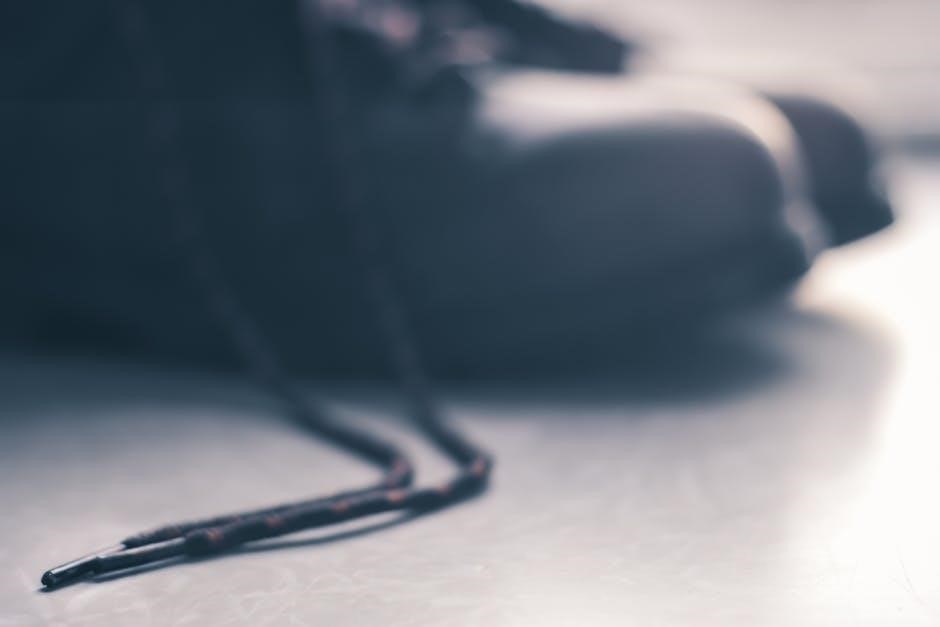
Overview of the 8.5 x 14 Notebook Size
The 8.5 x 14 notebook size is a popular choice for its versatility and spacious layout, ideal for jotting down notes, sketching, or organizing ideas. This size accommodates standard notebooks while offering ample writing space. When crafting a leather cover, the 8.5 x 14 dimension ensures a snug fit, protecting your notebook from wear and tear. Its proportions make it easy to carry in bags or briefcases, blending practicality with style. Perfect for everyday use or as a personalized gift, this size strikes a balance between functionality and portability.
Why Choose Leather for Your Notebook Cover?
Leather is a premium material that offers unparalleled durability, elegance, and customization options for notebook covers. Its natural texture and ability to develop a beautiful patina over time make it a timeless choice. Leather provides excellent protection against wear and tear, ensuring your notebook stays in pristine condition. Additionally, it can be dyed, stamped, or embossed, allowing for unique personalization. Whether you prefer a sleek, professional look or a rustic, vintage style, leather adapts to any aesthetic, making it the ideal choice for crafting a high-quality notebook cover.
Materials and Tools Required
High-quality leather, waxed thread, and stitching needles are essential. A stitching chisel, mallet, knife, ruler, glue, and edge beveler are the primary tools needed.
Recommended Leather Types and Thickness
Vegetable-tanned leather is ideal for notebook covers due to its durability and natural look. Opt for a thickness of 1.1–1.8 mm (45 oz), offering a sturdy yet flexible feel. Thinner leathers (1 mm) are easier to work with for beginners, while thicker options (1.8 mm) provide extra protection. Choose full-grain or top-grain leather for superior quality and a professional finish. Avoid overly stiff leathers to ensure the cover wraps smoothly around the notebook.
Essential Tools for Leather Crafting
The basic tools needed for leather crafting include a utility knife or rotary cutter for cutting, a steel ruler for precise measurements, and stitching needles with waxed thread for durable stitching. A mallet is useful for tapping tools without damaging the leather, while a stitching chisel or pricking iron helps create evenly spaced stitching holes. An edge beveler or burnisher is essential for smoothing and finishing edges, ensuring a professional look. These tools are fundamental for achieving clean cuts, precise stitching, and a polished finish on your leather notebook cover.
Additional Materials for Customization
Enhance your leather notebook cover with optional materials like pockets, pen loops, or straps for added functionality. Consider adding a closure strap or elastic bands to secure the notebook. Decorative elements such as rivets, buckles, or embroidery floss can add a personal touch. For a polished look, include edge finishing compounds or leather conditioners. These materials allow you to tailor the design to your preferences, creating a unique and functional accessory that reflects your style and needs.
Step-by-Step Guide to Making the Cover
Create a stunning leather notebook cover with our step-by-step guide. Learn to measure, cut, and stitch perfectly. Includes tools list and customization tips for a professional finish.
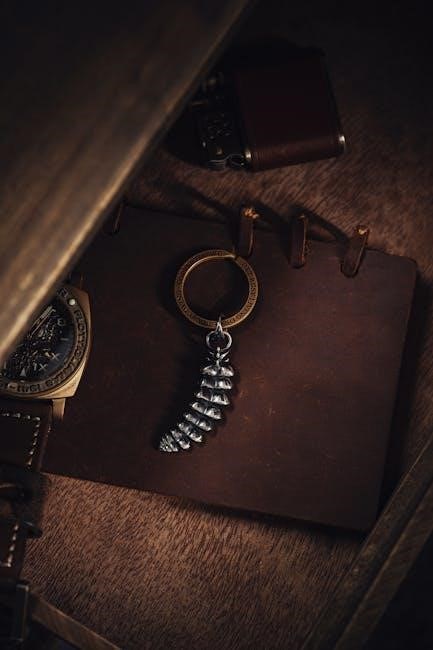
Measuring and Cutting the Leather
Start by printing the PDF pattern for your 8.5 x 14 notebook cover. Use a ruler to align the pattern on the leather, ensuring accurate measurements. Cut carefully with a rotary cutter or sharp knife, following the template’s edges. Add a 1/4-inch seam allowance around the pattern for stitching. For a professional finish, use a cutting mat and mallet to prevent accidents. Choose vegetable-tanned leather, 1.1-1.2 mm thick, for durability. Double-check measurements before cutting to avoid waste and ensure a perfect fit.
Preparing the Leather for Stitching
After cutting, use a stitching chisel or pricking iron to create evenly spaced holes along the edges. Thread waxed thread through leather needles, ensuring it’s stretched and thinned to prevent tangles. Align the leather pieces precisely, using a mallet to tap them into place. Apply a small amount of leather conditioner to soften the material, making it easier to handle. Double-check the alignment before starting to stitch, ensuring a clean and professional finish. This step is crucial for a durable and polished notebook cover.
Assembling the Cover
Align the leather pieces according to the pattern, ensuring the edges match perfectly. Use leather clips or clamps to secure the cover in place. Begin stitching from the center, working outward to maintain even tension. Use waxed thread and leather needles for durability. If adding pockets or straps, attach them before stitching the sides. Once stitched, inspect the seams for consistency. Apply a small amount of glue to reinforce the edges, then let it dry before handling. This step ensures a sturdy and professional-looking notebook cover.
Finishing Touches
Once assembled, refine your leather notebook cover with finishing touches. Use an edge beveler to smooth and round the edges, ensuring a polished look. Apply a leather conditioner or oil to protect the material and enhance its luster. For a professional finish, consider adding a protective coating or sealant. Optional: emboss or stamp your name, initials, or a design for personalization. Allow all treatments to dry completely before use. These final steps ensure durability and a refined, professional appearance for your custom leather notebook cover.
Customization Options
Elevate your notebook cover with personalized touches like pockets, compartments, or a pen loop. Choose from various leather types, colors, and finishes to match your style perfectly.
Adding Pockets and Compartments
Add functionality to your leather notebook cover with custom pockets and compartments. Include card slots, a pen loop, or a larger pocket for storing documents. These additions enhance organization and versatility, making the cover suitable for everyday use. Use contrasting leather colors or textures for a stylish touch. Ensure precise measurements and stitching for a seamless integration. This feature is ideal for users who want a practical yet elegant accessory that meets their specific needs. Perfect for professionals and creatives alike.
Incorporating Straps or Closures
Add a secure and stylish closure to your leather notebook cover with straps or buckles. A leather strap with a snap or buckle ensures your notebook stays closed, while an elastic closure offers a sleek, modern look. These additions not only enhance functionality but also elevate the design. Choose from various closure types, such as magnetic snaps or tie straps, to suit your preference. This feature is perfect for users who want a secure and polished finish for their leather notebook cover.
Embossing or Stamping Designs

Elevate your leather notebook cover with personalized embossing or stamping. Using a leather stamping kit, you can add initials, patterns, or logos for a unique touch. Heat-activated stamps create permanent designs, while metal stamps offer precise detailing. This technique allows for artistic expression, making your cover stand out. Whether subtle or bold, embossed designs add character and sophistication, turning your notebook cover into a one-of-a-kind accessory that reflects your style and creativity.
PDF Pattern Details
The PDF pattern includes A4 and US Letter formats, step-by-step instructions, and designs for 8.5 x 14 notebooks. Perfect for handmade projects, it ensures precise cutting and assembly.
What’s Included in the PDF Pattern
The PDF pattern includes digital templates for 8.5 x 14 notebooks in A4 and US Letter formats. It features step-by-step instructions, customizable designs, and options for pockets or straps. The file also includes a materials and tools section, ensuring you’re well-prepared. Perfect for beginners, it offers a clear guide to crafting a durable, stylish cover. Friendly support is available for any questions, making it a comprehensive resource for your leather crafting project.
Choosing the Right Format (A4 or US Letter)
Selecting the correct format ensures your leather notebook cover fits perfectly. A4 is ideal for international standards, while US Letter suits North American printers. Both formats are included in the PDF pattern, offering flexibility. Choose based on your printer’s compatibility or regional preferences. This dual-option feature ensures accuracy and convenience, making the pattern accessible worldwide. Simply print the template that matches your printer settings for precise results and a professional finish to your 8.5 x 14 notebook cover.
Downloading and Printing the Pattern
Downloading the PDF pattern is straightforward, with files available in both A4 and US Letter formats. Ensure your printer settings match the selected format for accurate results. Print on high-quality paper to maintain clarity. The pattern includes clear markings and instructions for cutting and assembly. Double-check your printer settings before printing to ensure the correct scale and fit for your 8.5 x 14 notebook. Proper printing ensures a precise fit and professional finish for your leather cover.

Tips for Working with Leather
Essential tips for working with leather include using sharp tools for clean cuts, conditioning leather for suppleness, and practicing on scraps before starting your project.
Best Practices for Cutting Leather
For precise cuts, use a sharp utility knife or rotary cutter with a steel ruler on a stable surface. Place leather on a cutting mat to prevent damage. Ensure the knife is sharp to avoid tearing. Align the pattern carefully, cutting slowly and steadily. Use a ruler for straight edges and consider tracing the pattern with a pencil first. Apply gentle pressure, increasing as needed. Cut away from your body for safety. Double-check measurements to ensure accuracy before cutting.
Mastering the Stitching Process
For a professional finish, use waxed thread and sharp stitching needles. Mark leather holes with a stitching chisel or pricking iron for accuracy. Stitch in a consistent pattern, maintaining even tension. Use a mallet to tap needles through leather. Keep the leather tight to prevent puckering. Start and end stitches neatly, tying knots securely. Apply beeswax to thread for durability. For a polished look, finish with edge beveling or burnishing. Practice on scrap leather to refine your technique before working on the final cover.
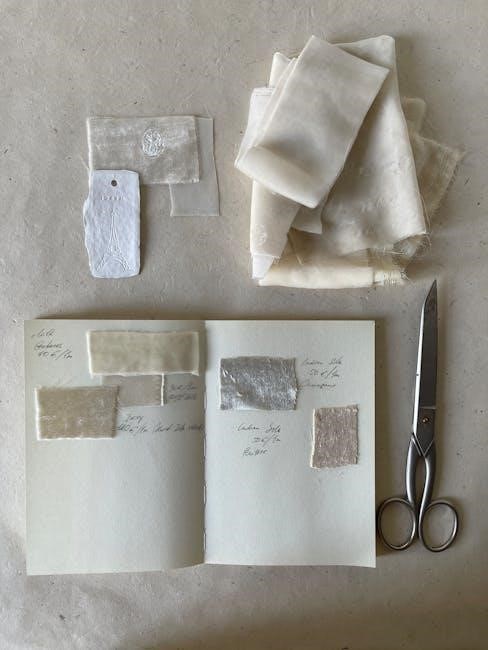
Edge Finishing Techniques
Edge finishing enhances the leather notebook cover’s durability and aesthetics. Use an edge beveler to round and smooth rough edges. Follow with a burnishing tool or cloth to polish the edges, creating a professional finish. Apply leather wax or oil to protect and condition the leather. For a sleek look, use a heat gun to slightly darken the edges. Proper edge finishing prevents fraying and gives the cover a refined appearance, ensuring it lasts for years while maintaining its elegant style.
Troubleshooting Common Issues
Address common issues like uneven edges, stitching mistakes, or leather stretch/shrinkage. Use sandpaper for edges, re-stitch for errors, and condition leather to maintain shape and durability.
Fixing Uneven Edges
Uneven edges can be corrected using fine-grit sandpaper or an edge beveler. Lightly sand the affected areas to smooth them out, ensuring consistency across the leather. For a polished finish, use a leather edge burnisher to refine the edges further. Regularly inspect and touch up edges during the crafting process to maintain a professional appearance. This step is crucial for achieving a clean, high-quality leather notebook cover that looks both durable and elegant.
Repairing Mistakes in Stitching
If stitching mistakes occur, carefully remove the incorrect stitches using a seam ripper. Reassess the pattern alignment and re-punch holes if necessary. Restitch the area with waxed thread, ensuring even tension to avoid further errors. For minor imperfections, apply a small amount of leather glue to reinforce the seam. Regularly inspect your work to catch mistakes early, as they become harder to fix once the project is complete. Patience and attention to detail are key to achieving professional-looking stitches.
Dealing with Leather Stretch or Shrinkage
Leather can stretch or shrink due to humidity, temperature, or improper handling. To prevent this, use high-quality, vegetable-tanned leather and condition it regularly. If stretch occurs, tighten the cover by adjusting the stitching or adding reinforcement. For shrinkage, gently stretch the leather over the notebook, ensuring it fits snugly. Always follow the pattern measurements to minimize these issues. Proper care and storage can extend the life of your leather notebook cover, maintaining its shape and appearance over time.
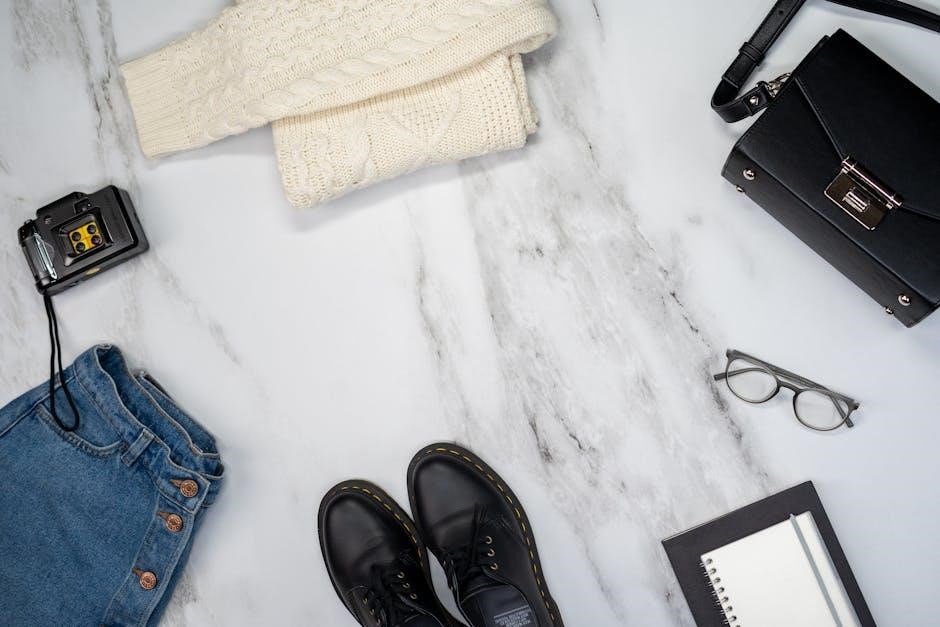
Showcase of Finished Designs
Explore stunning examples of custom leather notebook covers, featuring sleek designs, vibrant colors, and functional details. Each cover showcases craftsmanship, blending style with practicality for everyday use.
Examples of Custom Leather Notebook Covers
From sleek A5 designs to spacious 8.5×14 layouts, custom leather notebook covers offer endless possibilities. Explore styles like the Midori, tri-fold, or wallet-style covers, each tailored for functionality. Discover covers with built-in pockets, straps, or elegant stitching, perfect for organizing notes and accessories. Vegetable-tanned leather and precision stitching ensure durability and a professional finish. Whether for a minimalist look or a rustic vibe, these covers blend practicality with timeless elegance, making them a must-have for stationery enthusiasts and professionals alike.
Inspiration for Unique Designs
Draw inspiration from various styles like Midori, tri-fold, or wallet-style covers to create a one-of-a-kind leather notebook cover. Experiment with contrasting stitching, embossed patterns, or mixed leather textures for a personalized touch. Add functional details like pen loops, card slots, or magnetic closures to enhance usability. Consider incorporating natural dyes or hand-tooled designs for a rustic charm. Let your creativity shine by blending modern aesthetics with timeless craftsmanship to craft a cover that reflects your unique style and preferences.
Time and Cost Estimates
Creating a leather notebook cover takes about 24 hours, depending on your skill level and design complexity. Material costs typically range between $50 to $100.
Estimated Time to Complete the Project
Completing a leather notebook cover typically takes around 24 hours, depending on your experience and the design’s complexity. Beginners may need more time to master techniques like stitching and edge finishing, while experienced crafters can finish faster. Breaking it down, cutting and preparing the leather takes about 4-6 hours, stitching 6-8 hours, and finishing touches 4-6 hours. Plan accordingly, and consider simplifying the design to save time. Using a pre-made pattern can also streamline the process.
Cost of Materials and Tools
The cost for materials and tools to make a leather notebook cover can range from $50 to $150, depending on the quality and source of materials. Vegetable-tanned leather, recommended for its durability, typically costs between $20 and $50, depending on thickness and size. Additional materials like waxed thread, stitching needles, and glue add around $10 to $20. Tools such as a knife, ruler, and edge beveler may cost $30 to $50 if you don’t already have them. Prices vary based on brand and location.

Safety Tips and Precautions
Always wear protective gloves and eyewear when cutting or stitching leather. Ensure your workspace is well-lit and clear of clutter. Keep sharp tools away from children and pets.
Working Safely with Sharp Tools
When working with sharp tools like knives, rotary cutters, or stitching chisels, always maintain a firm grip and cut away from your body. Wear protective gloves and eyewear to prevent accidents. Ensure tools are well-maintained and stored safely when not in use. Keep your workspace clean and well-lit to avoid slips or trips. Never leave sharp objects unattended, especially if children or pets are nearby. Regularly inspect tools for dullness, as they require more force and increase the risk of injury.
Protecting Your Workspace
Protecting your workspace is crucial when working on a leather notebook cover project. Cover your work surface with a durable cutting mat or scrap cardboard to prevent damage from sharp tools. Ensure good lighting to avoid eye strain and maintain clarity. Keep tools and materials organized to minimize clutter and reduce the risk of accidents. Regularly clean up scraps and debris to maintain a safe and efficient working environment. This will help you stay focused and ensure your project turns out perfectly.
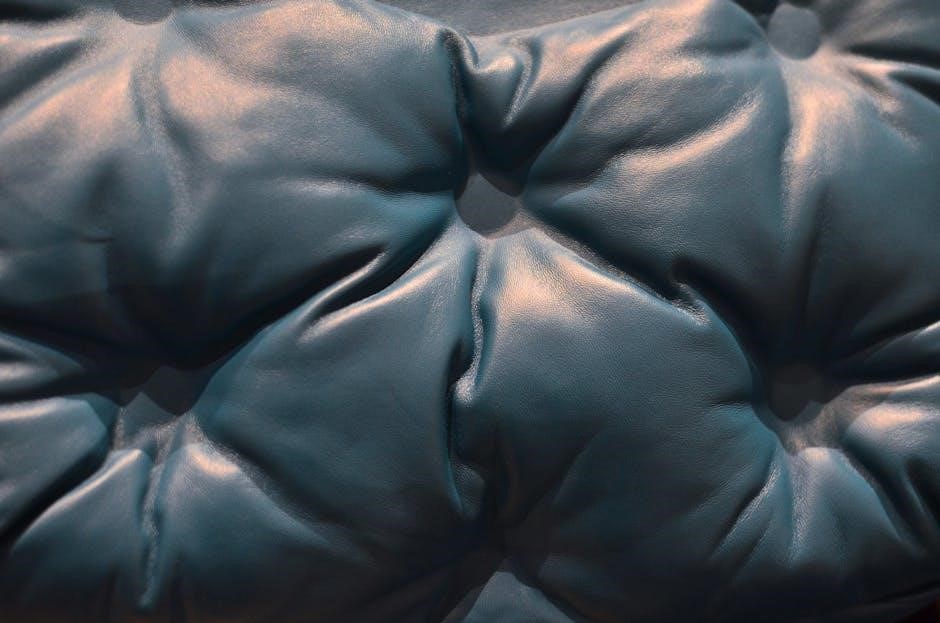
Conclusion
Creating a leather notebook cover is a rewarding project that combines craftsmanship with functionality. With the right tools and pattern, you can craft a durable, custom cover that protects your notebook and adds a touch of personal style. This project is perfect for both beginners and experienced crafters, offering a sense of accomplishment and a beautiful, long-lasting accessory.
Final Thoughts on Making a Leather Notebook Cover
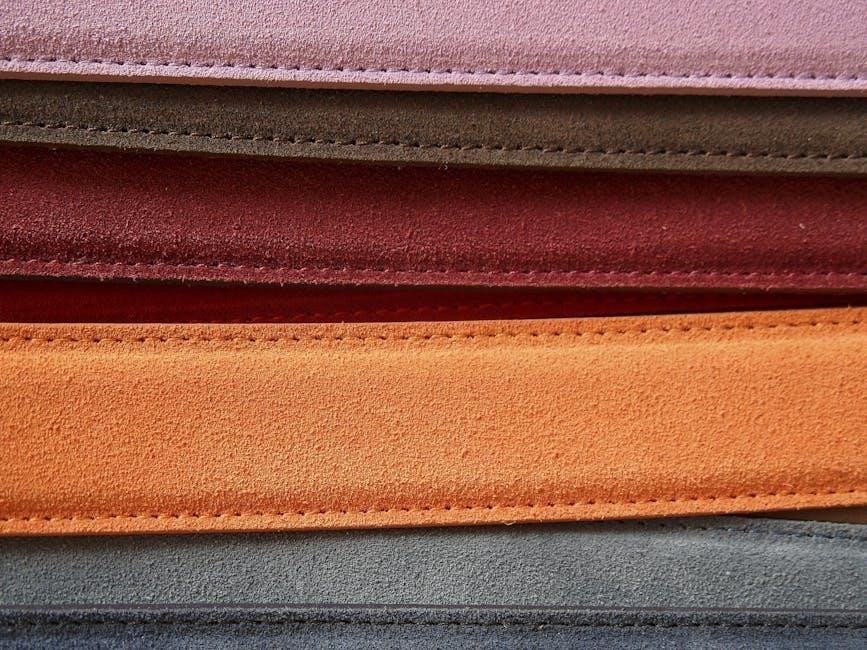
Creating a leather notebook cover is a fulfilling project that combines creativity with practicality. Using a pattern designed for an 8.5 x 14 notebook ensures a perfect fit and professional finish. The process allows for customization, enabling you to tailor the design to your preferences. Whether you’re a beginner or an experienced crafter, this project offers a sense of accomplishment and a durable, stylish accessory. It’s a great way to personalize your notebook while exploring the art of leather crafting.
Encouragement to Start Your Project
Embark on the rewarding journey of crafting your own leather notebook cover using the 8.5 x 14 PDF pattern. With clear instructions and customizable options, this project is perfect for both beginners and experienced crafters. The process is straightforward, and the result is a durable, stylish accessory that reflects your personal style. Don’t hesitate to start—leather crafting is a skill that grows with practice, and this project is an excellent way to begin. The satisfaction of creating something handmade is unmatched!